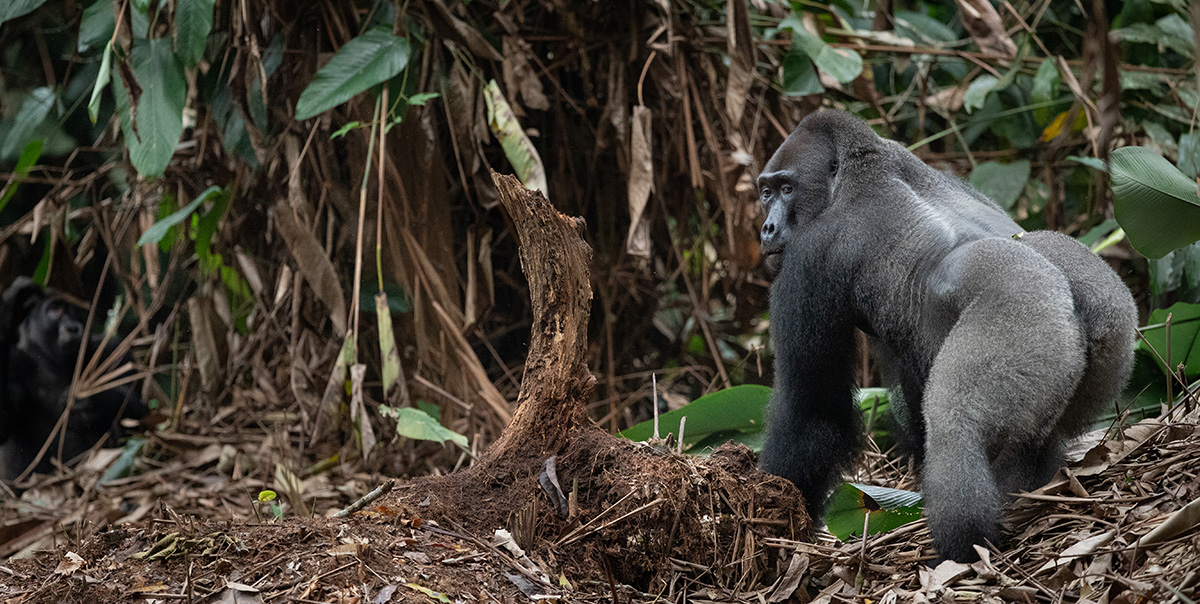As a result of the work done by gorilla researchers Dr. Magda Bermejo and German Illera, a number of habituated groups can be tracked and observed in the Ndzehi Forest area.
Movements
The home range of the group centers around Ngaga Camp, with its movements dictated by the seasonal availability of different forest fruits and other forage, such as Marantaceae leaves and stems.
Daily activity patterns follow a set routine, with the group leaving their overnight nests in the cool of the early morning and foraging on the move until locating a productive feeding site for the day.
The Group Name
The primary group for our ecotourism gorilla tracking is the Neptuno Group, named for its enormous and often intimidating silverback, Neptuno.
This group also consists of the curious and engaging young adult female, Nona, the delightful and mischievous young male, Pan, and a number of sage adult females.
All Types
In this 30 km² (11.5 sq mi) area, there are no fewer than seven groups, totaling 105 individuals.
Of these, three are the focus of habituation and research efforts: the Neptuno Group (16 individuals), the Jupiter Group (25 individuals), and the Mecurio Group (12 individuals).
Playtime
The midday resting period sees the group making day nests and relaxing and interacting in the forest undergrowth, the adults sedate and phlegmatic, while the more energetic youngsters can't resist interacting with each other.
Foraging and movement in the afternoon end with the selection of an overnight nesting site.
It takes time
While gorilla sightings and encounters are very reliable, viewing is dependent on weather and tracking conditions.
Tracking expeditions do not cover enormous distances and can range in length from 1-8 km (0.5-5 miles) over undulating terrain.
The undergrowth can be thick; however, including the time spent with a gorilla group, excursions can last between two and seven hours.
Viewing Etiquette
Protocols, critical for gorilla conservation, are designed specifically to limit behavioral impact and also potential disease transmission from humans to gorillas.
These are based on the guidelines issued by the IUCN for great ape viewing and are very similar to those of Rwanda and Uganda.

Good to know
The maximum viewing duration of any group is 1 hour per day.
No food or smoking during tracking